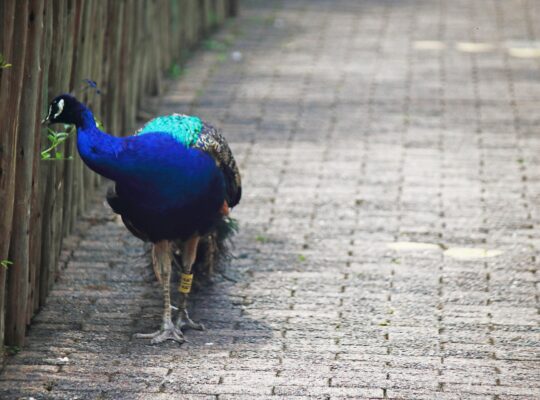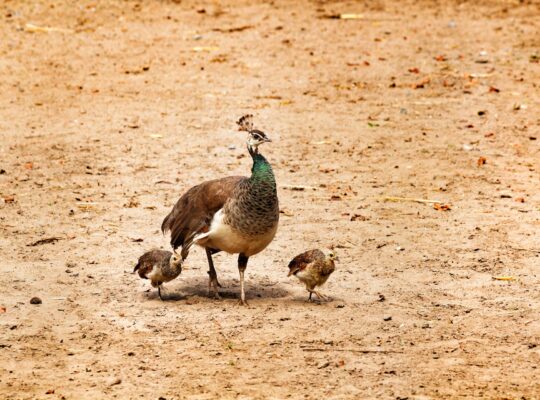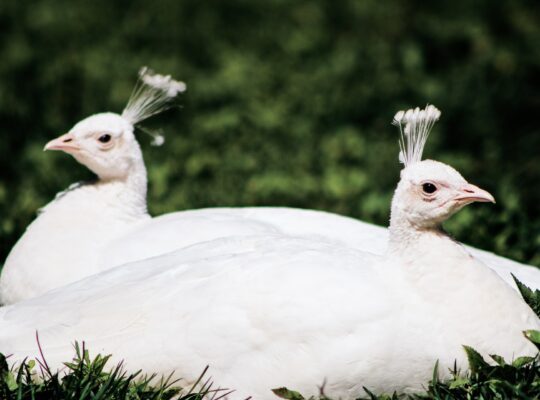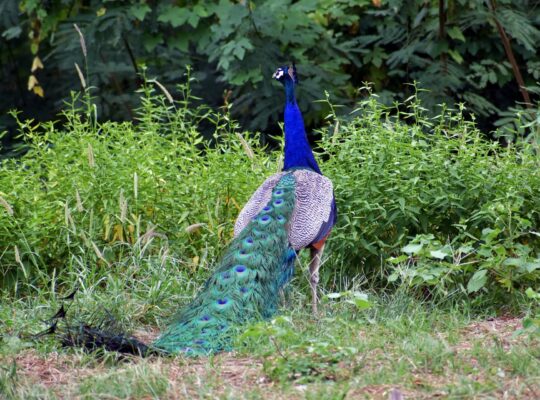Peacocks, also known as peafowl, are a species of large, colorful birds native to Asia and Africa. These birds are known for their colorful feathers and elaborate courtship displays, which make them a popular choice for ornamental birds in many parts of the world.
The question of whether or not peacocks mate for life is a common one among animal enthusiasts. In this article, we will explore this question and the peacock’s reproductive system and how they get pregnant.
Peacocks do not stay with the same partner for life. They are polygamous, like many birds, and often have more than one partner in their lifetime. During mating season, which is usually between March and May, males will show off their colorful feathers to attract females. Then, to increase their chances of passing on their genes, they will mate with as many females as possible.
The males will try to be the most potent peacock in the group. They will use their tail feathers and other displays to scare off or attract females. Then, the females will choose which males they want to mate with. They don’t stick with one male and may switch mates several times during the season.
Additionally, peacocks don’t have strong bonds with each other. During mating season, they may fight over territories or females, but they don’t show any loyalty or attachment to each other.
Do peacocks make love with their eyes?
Peacocks employ the entirety of their colorful plumage, not just the feathers on their tails, to court potential mates. It is believed that the characteristic “eye” pattern on the male’s feathers, which is assumed to play a part in the process of enticing females, helps attract potential mates.
To completely understand the eye pattern’s impact on peacock mating behavior, further study is required. However, it is still being determined precisely how the eye pattern affects the choice of mate, which is one of the reasons.
How Does a Peacock Get Pregnant?
A peacock can become pregnant by mating with a female peacock, also known as a peahen. The male peacock will display his colorful tail feathers to attract a female. Once the female is interested, the male will perform a mating ritual to win the female’s favor.
If the female is willing, she will allow the male to mount her back, and the two will mate. The female peacock produces an egg that is fertilized by the male’s sperm. The female will then lay the egg in a nest, where it will be incubated for about 28 days. During this time, the female will guard the nest, protecting it from potential predators. Once the egg hatches, the female will care for and feed the chick until it is old enough to fend for itself.
Pregnancy in peacocks typically lasts for about 28 days, at which point the female will lay her egg. Peacocks typically lay one egg at a time but can lay up to four eggs in a single clutch. Peacocks are not monogamous, meaning the male will not stay with the female to help raise the chicks. Instead, the female will raise the young peacock alone.
Despite the female’s efforts, the survival rate of young peacocks is usually relatively low. This is due to predation and the fact that the young birds are inexperienced and vulnerable to dangers in the wild. To increase the chances of survival, females typically lay multiple eggs in the same nest, so at least some of them will make it.
Peacock reproduction system
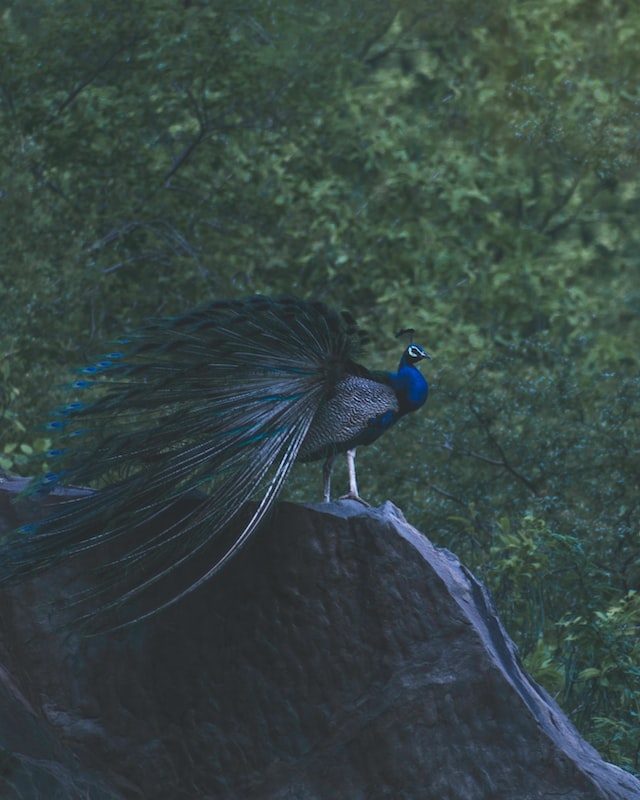
The reproductive system of the peacock is very complex and exciting. These birds are a species of pheasant that is known for their vibrant and beautiful plumage. Peacocks reproduce sexually, with a male peacock, or “peacock,” displaying his large and colorful tail feathers to attract a female, or “peahen.” The male will then court the female by strutting around her with his feathers spread out, creating a stunning visual display. The female will then select a mate by choosing the one she finds most attractive.
After mating, the male will usually leave the female to care for the eggs and young. The female will lay eggs in a shallow depression in the ground, which she will then cover with leaves and twigs. The eggs are incubated for around 28 days, and when the chicks hatch, the female will care for them until they reach independence.
The chicks are precocial, meaning they can move around and find food shortly after hatching. They will usually stay with the mother for the first few weeks of life, and she will continue to protect them from predators. As the chicks grow, they will start to explore and learn to fly, eventually leaving the mother to establish their own territory.
The peacock reproductive system is efficient and has allowed the species to thrive in numerous habitats worldwide. The large and attractive tail feathers of the males make them highly sought-after by females, ensuring the transfer of genetic material from one generation to the next. The reproductive system of the peacock is a remarkable example of the beauty and complexity of nature.
In conclusion, peacocks are magnificent and stunning birds, and as a result, they have come to be regarded as a sign of pride and majesty. However, contrary to popular belief, they do not remain faithful to one another throughout their whole lives and do not choose to have lifelong partners.
Peacocks, on the other hand, are polygynous, which means they have more than one partner and engage in sexual promiscuity. After mating, the female peacock, also known as the peahen, would deposit her eggs in the nest built by the male to get pregnant.
Peacocks have a very intricate reproductive system, which requires them to engage in various courting activities and rituals. Peacocks are nonetheless intriguing and beautiful creatures, even though they do not stay with the same partner for their whole lives.


